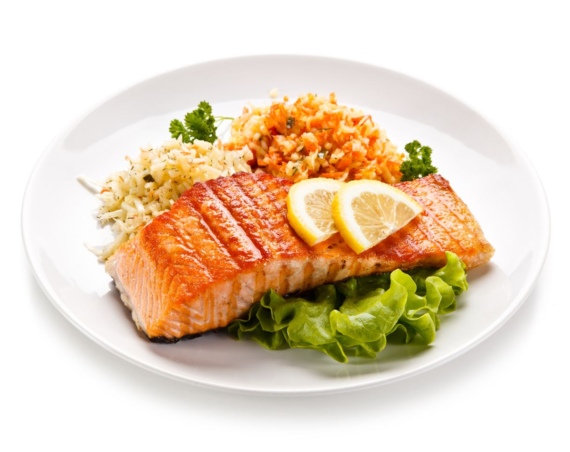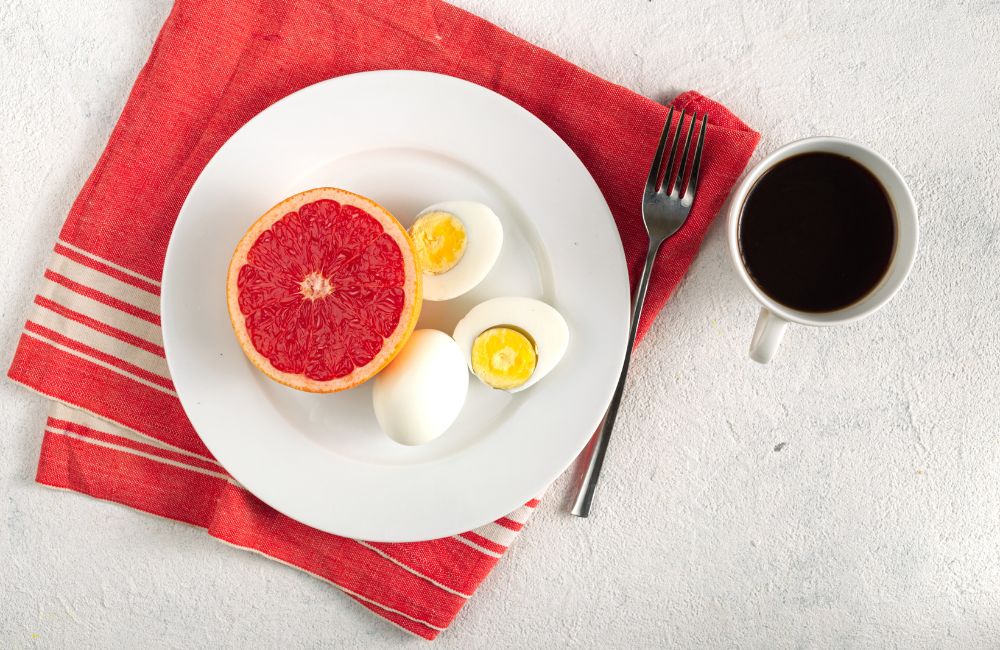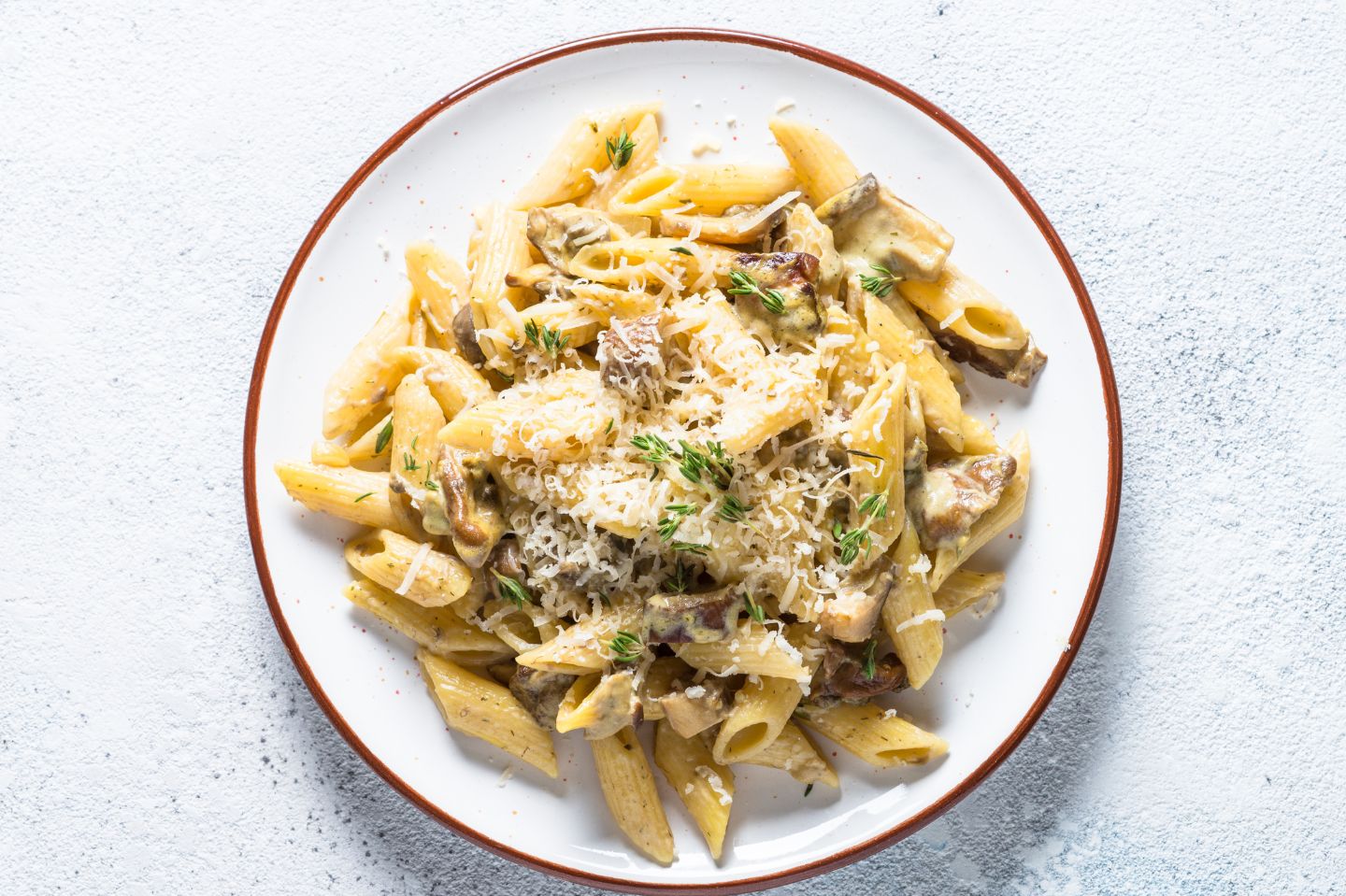
The latest trend, the DASH diet, isn’t all about quick weight loss, Instead, it’s about reducing the risk of heart disease and high blood pressure.
DASH diet proved to reduce heart disease and high blood pressure!
Heart disease was the number one cause of death in the United States in 2020 and 2021. High blood pressure, also known as hypertension, is a major risk factor for the development of heart disease.
Hypertension is caused when the pressure from your blood pumping is too high for your blood vessels. This can cause damage to these vessels that can affect the major organs of your body (1, 2).
Poor diet and low activity levels are among the top causes of hypertension. A diet high in saturated fats and salt contributes the most to this risk.
Unfortunately, the western diet includes a high number of processed foods that include high levels of these, further contributing to the growing problem.
To address this, special diet plans have been created, including the DASH diet, to help Americans reduce their risk (2).
What Is the DASH Diet?
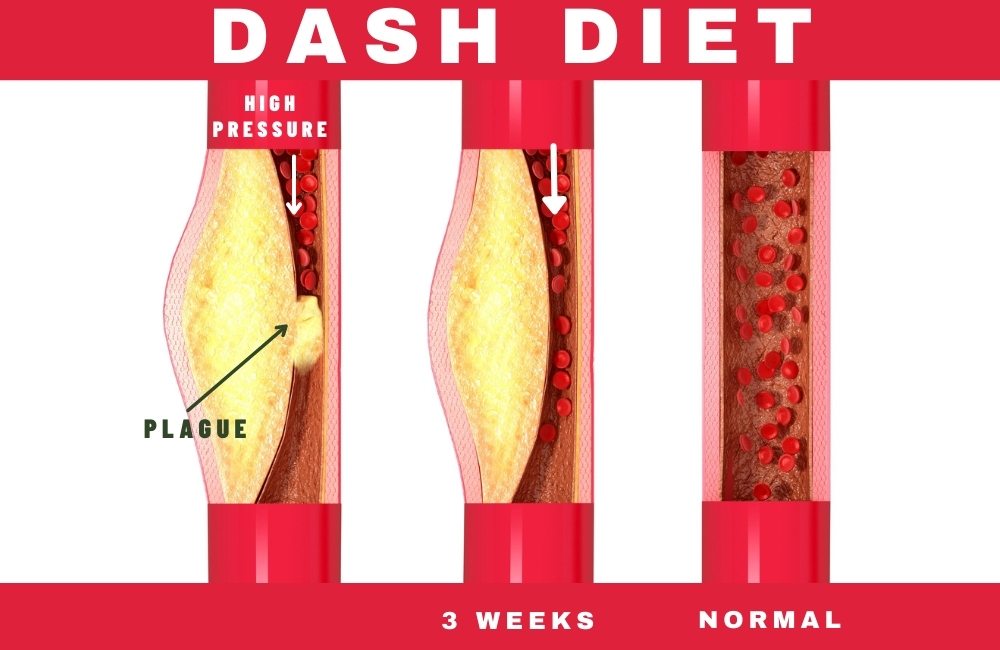
The DASH diet stands for Dietary Approaches to Stop Hypertension. It is a plant-focused diet rich in fruits, vegetables, and whole grains. It encourages low amounts of processed foods and red meats, limiting sodium and saturated fat.
The DASH diet has been proven to help lower hypertension and cholesterol, among many other benefits.
It was first introduced in 1997 and has since been endorsed by the American Heart Association, the National Institute of Health, the US Guidelines for Treatment of High Blood Pressure, and more (3).
Benefits of the DASH Diet
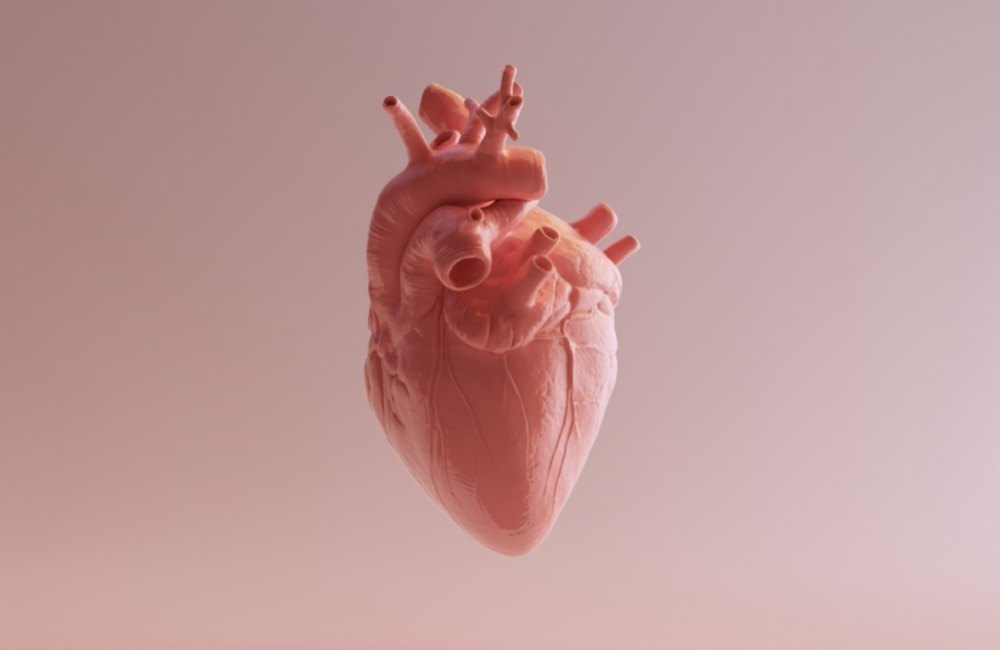
Aside from reducing blood pressure, the DASH diet has been found to include many other health benefits.
The DASH diet has also been found to help decrease cancer, metabolic disease, diabetes, and heart disease risk. This diet may also aid in weight loss, although it was not specifically designed for that [4, 5, 6, 7].
The DASH diet may have even more benefits that surpass what has been proven by studies. The main benefits of the DASH diet can be attributed to the high fruit and vegetable intake recommended with this diet.
Many studies have found that increased consumption of fruits and vegetables helps reduce the risk of many different chronic diseases [8].
Who Is the Dash Diet Best For?
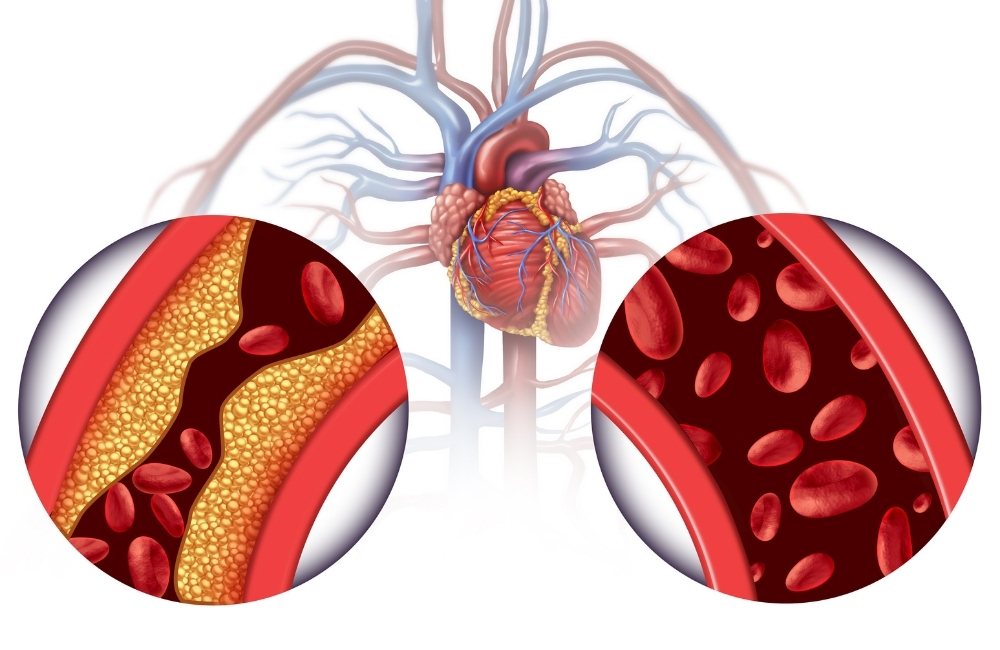
The DASH diet is best for those looking to improve their blood pressure and their overall health. Although most can benefit from this diet, it’s not for everyone.
The DASH diet limits sodium, a common contributor to high blood pressure. It is encouraged to consume no more than 2300mg of sodium per day.
There is also a lower salt version of the DASH diet that restricts sodium even further, to no more than 1500mg per day.
Although reduced sodium intake to these levels has shown the most promise in those with high blood pressure, some individuals may be salt sensitive.
Those who are salt sensitive should avoid reducing their salt intake to such low levels unless otherwise recommended by their physician.
Very low salt intake, such as 1500mg per day, has also not been proven to be more effective in those with high blood pressure. In fact, eating too little salt can increase your risk for heart disease and fluid retention.
The
DASH diet currently works well likely because it helps people reduce their overall salt intake from very high levels to more moderate (9).
How to Follow the DASH Diet
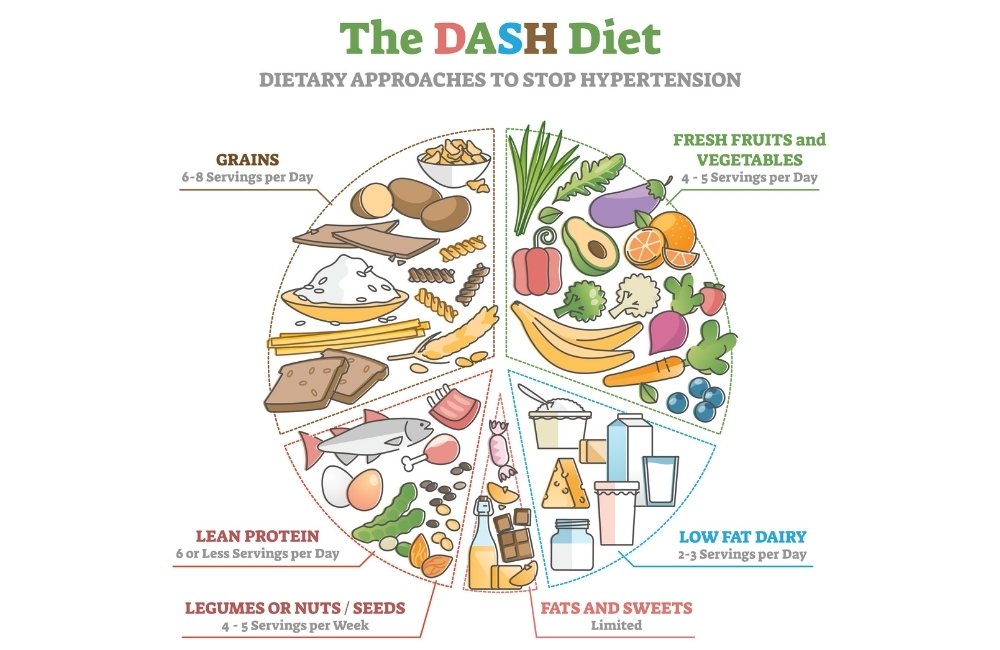
Unlike some other diet plans, the DASH diet does not provide a specific food list. Instead, it recommends servings of specific foods. Below is an example of specific servings on the DASH diet based on a 2,000-calorie diet.
Whole Grains:
- The DASH diet recommends 6-8 servings of whole grains per day.
- This includes whole grain bread, whole grain cereal, brown rice, quinoa, oatmeal, etc.
- 1-serving of whole grains depends on the product, it might include 1 slice of whole grain bread or ½ cup of brown rice.
Vegetables:
- The DASH diet recommends 4-5 servings of vegetables per day.
- 1-serving includes 1 cup of raw leafy greens, such as spinach or kale, or ½ cup. sliced vegetables such as broccoli or carrots.
Fruits:
- The DASH diet recommends 4-5 servings of fruit per day.
- 1-serving includes ½ cup berries, ¼ cup dried fruits, or 1 whole apple.
Dairy:
- The DASH diet recommends 2-3 servings of low-fat dairy per day.
- 1-serving includes 1 cup of low-fat milk or yogurt or 1 ounce of cheese.
Protein:
- The DASH diet recommends less than 6 servings of lean protein per day.
- Lean protein sources include chicken, turkey, and seafood.
- It’s recommended to limit red meats to no more than twice per week.
- 1 serving is considered 1 ounce of meat or 1 egg.
Nuts, Seeds, and Legumes:
- The DASH diet recommends 4-5 servings of nuts, seeds, and legumes per week.
- This includes almonds, peanuts, sunflower seeds, pumpkin seeds, kidney beans, lentils, etc.
- 1-serving includes 1/3 cup of nuts, 2 tablespoons of seeds or nut butter, and ½ cup of cooked legumes.
Fats:
- The DASH diet recommends 2-3 servings of vegetable oils per day.
- This includes olive oil, canola oil, avocado oil, etc.
- 1-serving includes 1 tablespoon of oil.
Sugar:
- The DASH diet recommends less than 5 servings of candy or added sugar per Week
- 1-serving includes 1 tablespoon of sugar (12.5g)
Sample DASH Diet Menu
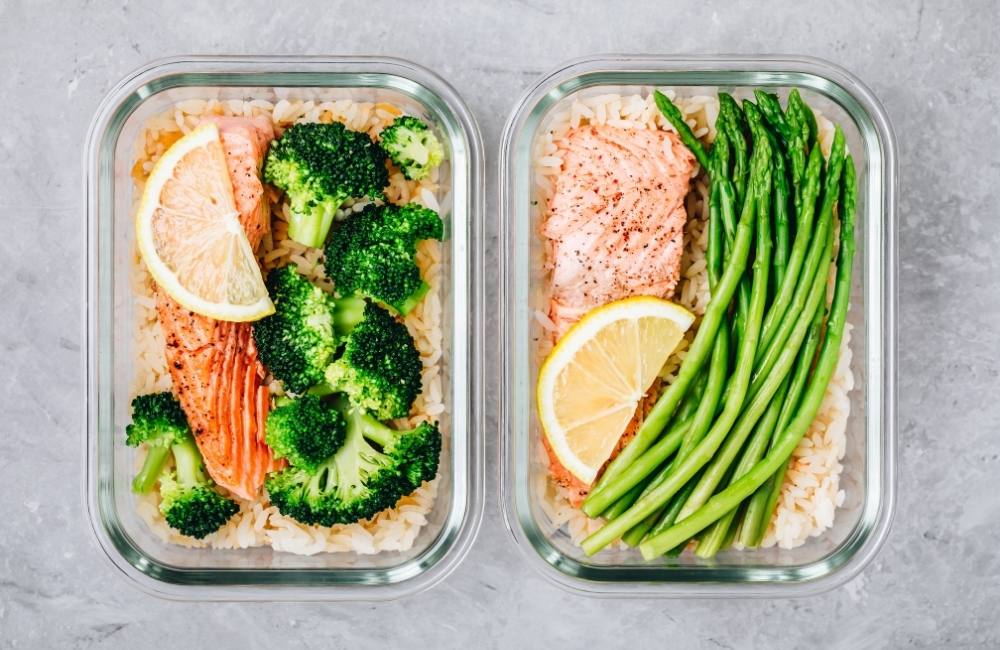
Day 1:
- Breakfast: 1 cup low-fat yogurt with ½ cup fresh berries, 1 slice whole grain toast with 1 tablespoon of almond butter
- Lunch: 1 cup spinach, 1 hard-boiled egg sliced, 1 cup cooked quinoa, 2 tablespoons low-fat salad dressing, 1 cup roasted vegetables
- Dinner: 3 ounces of baked salmon with ½ cup broccoli and 1 small baked potato
- Snack: Banana
Day 2:
- Breakfast: 2 egg omelets with ½ cup spinach, ½ broccoli, 1 ounce low-fat feta cheese, ½ avocado, and 1 sliced orange
- Lunch: Whole grain spaghetti noodles with turkey meatballs and ½ cup roasted broccoli and ½ cup roasted zucchini
- Dinner: Canned tuna with 1 cup spring mix, ½ cup sliced tomatoes, red onion, ½ cup sliced cucumber, 2 tablespoons low-fat dressing, 1-ounce low-fat crumbled goat cheese.
- Snack: small apple with 1 tablespoon peanut butter
Day 3
- Breakfast: 1/2 cup low-fat cottage cheese with ½ cup sliced pineapple and ¼ cup sliced almonds
- Lunch: 1-cup vegetable soup with low-sodium vegetable broth and a 1-cup garden side salad with 3 ounces shredded chicken breast and 2 tablespoons low-fat dressing.
- Dinner: 3-ounce cod fillet with 1 cup mixed vegetables and ½ cup brown rice
- Snack: orange
Day 4:
- Breakfast: 1 cup oatmeal with 1/3 cup walnuts, ½ cup chopped apple, and 1 cup skim milk.
- Lunch: egg salad with 2 hard-boiled eggs, low-fat mayonnaise, 2 slices whole grain bread and ½ cup fresh squeezed orange juice.
- Dinner: 3 ounces of lean chicken breast with ½ cup of green beans, ½ cooked carrots, and ½ cup couscous
- Snack: ½ cup fresh berries with 1 cup low-fat yogurt
Day 5
- Breakfast: 2 slices of whole grain toast with 2 tablespoons of peanut butter and 1 tablespoon of chia seeds and ½ cup of fresh sliced strawberries
- Lunch: 3 ounces baked salmon with 1 cup shredded kale, 1 cup roasted vegetables, and 2 tablespoons low-fat dressing
- Dinner: 3-ounce turkey breast with ½ cup mashed potatoes and 1 cup mixed vegetables
- Snack: ½ cup canned peaches
Bottom Line
Whether you are looking to improve your blood pressure, heart health, or general health, the DASH diet is a good diet to follow.
By emphasizing more plant-based, whole foods and less processed, most people could benefit from these guidelines.
However, following a very low sodium diet may not be for everyone. Always be sure to speak with your health care provider before starting any diet.

